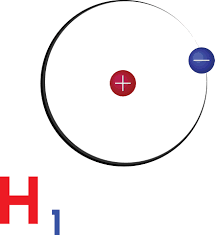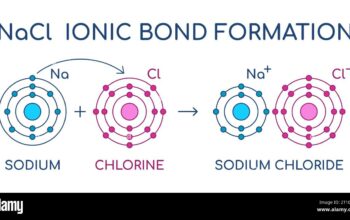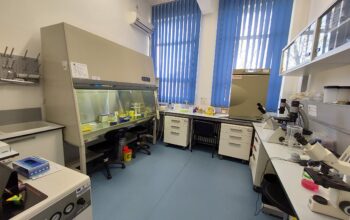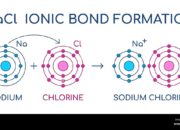The quest to understand the hydrogen atom, the fundamental building block of the universe, is as profound as it is intricate. As we delve into the uncanny notion of how much hydrogen might be contained within a seemingly innocuous teaspoon, we encounter an astonishing panorama of scientific inquiry and cosmic relevance. This exploration melds the microcosmic with the macrocosmic, inviting us to contemplate not only the atom’s quantity but also its staggering implications in the existential fabric of reality.
To embark on this intellectual journey, we must first establish the basic definition of a teaspoon. A typical teaspoon holds approximately 5 milliliters of liquid. When we consider the volumetric presence of hydrogen within this minute measure, we must remember that hydrogen, often referred to as the primordial element, is abundant in the universe. In fact, it constitutes roughly 75% of the elemental mass of the cosmos. Yet, in an earthly context, how does this translate to mere ounces and teaspoons?
Hydrogen, with its single proton and electron, boasts a mere atomic mass of approximately 1.008 u (atomic mass units). Despite its diminutive size on an atomic scale, the total number of atoms contained in any macroscopic amount of matter is astronomical. The Avogadro constant posits that one mole of a substance, encompassing 6.022 x 10²³ entities, weighs correspondingly to its atomic weight in grams. Therefore, a stoichiometric calculation beckons to be undertaken.
Consider a teaspoon filled to the brim with water as our measurement standard—water (H2O) consists of two hydrogen atoms for every molecule. Given that a milliliter of water weighs about 1 gram, a full teaspoon approximates a weight of 5 grams. To calculate the amount of hydrogen atoms therein, one must discern how many molecules of water correspond with this mass:
- In 5 grams of water, there are (frac{5g}{18g/mol} approx 0.28) moles of water.
- Since one mole of water harbors 2 moles of hydrogen, the total moles of hydrogen becomes (0.28 text{ moles} times 2 = 0.56 text{ moles of hydrogen}).
- Applying the Avogadro constant, the number of hydrogen atoms is (0.56 text{ moles} times 6.022 x 10^{23} approx 3.37 x 10^{23}) hydrogen atoms.
The sheer quantity of hydrogen in a single teaspoon of water seems almost unfathomable—more hydrogen atoms than there are stars in the Milky Way galaxy. This staggering figure urges us to reflect on the ubiquitous nature of hydrogen, the first element formed in the primordial soup of the universe following the Big Bang. This perspective transforms the humble teaspoon into a microcosm of the cosmos, a miniature universe brimming with the very essence of stellar formation.
Moreover, hydrogen’s role extends beyond mere abundance; it is the catalyst of cosmic phenomena. In the hearts of stars, hydrogen undergoes nuclear fusion, releasing energy that powers the stars and illuminates the night sky. Each teaspoon of hydrogen encapsulates the potential for vast amounts of energy—potentially billions of hydrogen bombs worth of power, should we ever master the means to utilize it. The atom symbolizes life-sustaining fuel; from the drudgery of life’s biological processes to the spectacular fireworks of cosmic origination, hydrogen is the archetypal atom, serving as the cornerstone of matter.
Investigating the significance of hydrogen, we can derive analogies that inspire us to grasp its unique appeal. Imagine that each hydrogen atom serves as a solitary star in a vast galaxy, illuminating the dark vacuum of deep space. Just as each star possesses its distinct gravity and life cycle, so does each hydrogen atom contribute to the silent narrative of our universe, underpinning the evolution of complexity from mere simplicity.
However, the intrigue does not end with astronomical proportions. The implications of hydrogen extend into the realms of chemistry, biology, and technology. From enabling biochemical processes such as respiration to revolutionizing energy storage through hydrogen fuel cells, hydrogen’s versatility is both profound and pragmatic. It exists in our DNA, our water, and potentially, as a clean energy future. Herein lies an evolutionary analogy: the single hydrogen atom not only assembles into the molecules of life but also propels mankind towards innovative pathways of sustainability.
As we reflect upon the remarkable quantity of hydrogen atoms housed in just one teaspoon, it becomes evident that our universe is composed of relationships, connections, and interactions that transcend our immediate perception. Each atom is a participant in an intricate web of cosmic storytelling, revealing to us the elegance of simplicity amidst the grandiose scale of the universe.
In closing, the musings on hydrogen encapsulated within a teaspoon compel us to reevaluate our understanding of existence itself. The transition from hydrogen’s atomic attributes to its vital role in the larger universe elucidates the grandeur of science, inviting us to ponder the cosmic dance of particles. Through curiosity and inquiry, we uncover not merely what is visible but also what vibrates in the symphony of the universe—reminding us that even the tiniest constituents can harbor boundless possibilities and profound implications.












